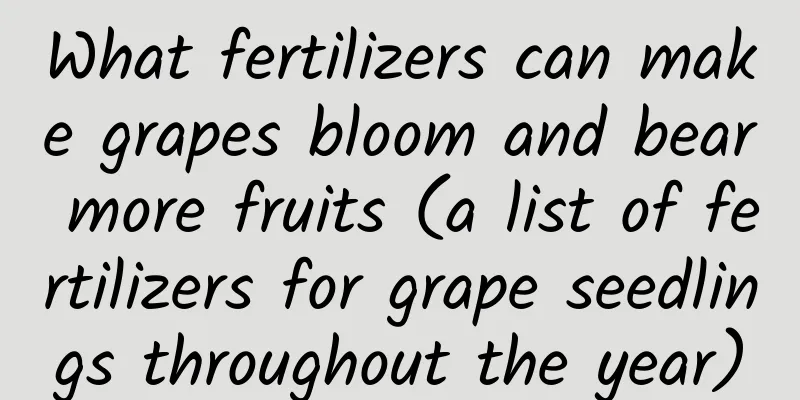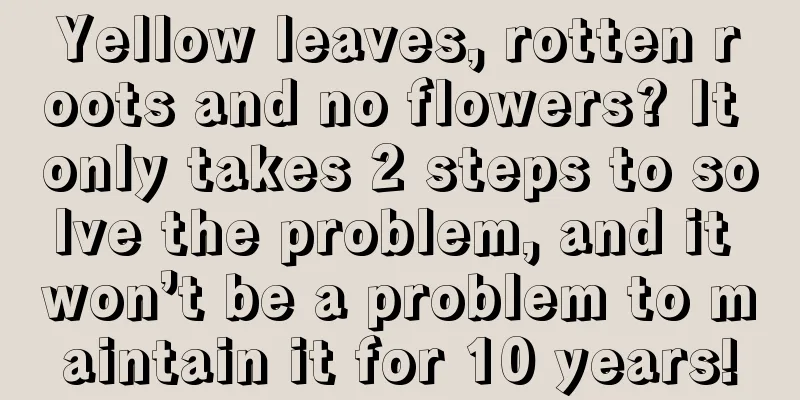Konjac winter management method

|
Konjac usually likes a warm environment and is sensitive to low temperatures, especially below 0℃, and is easily affected by frost damage. Konjac can be processed into many by-products, and the industrial chain is well developed. Below we will learn about the wintering management measures for konjac. 1. Ditch cleaning and soiling In areas with low altitudes, less snow accumulation, and no permafrost, fallen konjac plants should be removed in a timely manner, and the furrows should be cleaned in combination with weeding, the holes left by the konjac petioles should be sealed, and the soil layer should be thickened to keep warm and prevent frost. The soil thickness is recommended to be kept at 15-20 cm. 2. Add covering After sealing the petiole holes, use black mulch, crop straw, leaves and other materials to cover them for insulation. When covering, make sure the ground film is intact and not damaged, and compact it with soil all around; the covering of crop straw and leaves should be even and about 10 cm thick. Especially when a cold wave comes, it is necessary to check the covering situation regularly to ensure that the covering is tight to achieve the effect of keeping warm and preventing frost. 3. Indoor storage over the winter In areas with high altitudes, low temperatures, easy snow accumulation and possible permafrost, konjac should be moved indoors after harvesting. You can use the method of spreading the items out flat on the shelves or filling the baskets to 2/3 full and then placing them in a cross shape. The indoor temperature should be maintained at approximately 10°C. During the sunny noon period, ventilation can be allowed for 1-2 hours; when encountering rainy or snowy weather, doors and windows should be closed to prevent cold air from entering. According to the storage conditions, you can light a fire to increase the temperature and raise the storage temperature of the seed taro to ensure the safe wintering of the seed taro. In summary, by implementing these measures, konjac can be effectively protected from the effects of low temperatures in winter, laying a good foundation for its growth in the coming year.
|
<<: Key points for managing grapevines overwintering
>>: Management methods for bougainvillea overwintering
Recommend
What should I do if the leaves of Daphne odora turn yellow? What is the reason for the black spots on the leaves?
1. What to do with yellow leaves When you find th...
How to plant cosmos and what are the planting time and methods
Cosmos planting time The cultivation season of Co...
How often to water newly planted succulents
1. How often to water There is no fixed time for ...
How many days does it take for ginger to sprout?
Ginger prefers a warm and humid environment, and ...
How to grow Euphorbia milii to make it more vigorous?
Euphorbia milii is known for its beautiful flower...
The reason why the leaves of white palm turn yellow
1. Not adapting to the environment Its leaves tur...
Propagation of the City That Never Sleeps by division
When to divide the plants The evergreen aloe vera...
Cultivation methods and precautions of maple
1. Soil Loose, fertile and breathable soil is mos...
Gourd planting management and pruning
The gourd is an annual herbaceous plant of the Cu...
How to grow big-leaf banyan tree and what to pay attention to
Growth habits of banyan tree The large-leaf banya...
Which month is best to plant pepper seedlings?
Pepper seedlings are usually grown between March ...
What is the difference between horse chestnut and soapberry? Are they the same plant?
1. Difference 1. Different appearance Horse chest...
Is Cordyline poisonous?
Appearance characteristics Cordyline grows relati...
Where does wood ear grow?
Fungus is a plant of the Agaricales order, Agaric...
How to prune grape branches
How to prune grape branches Grape vines are usual...









